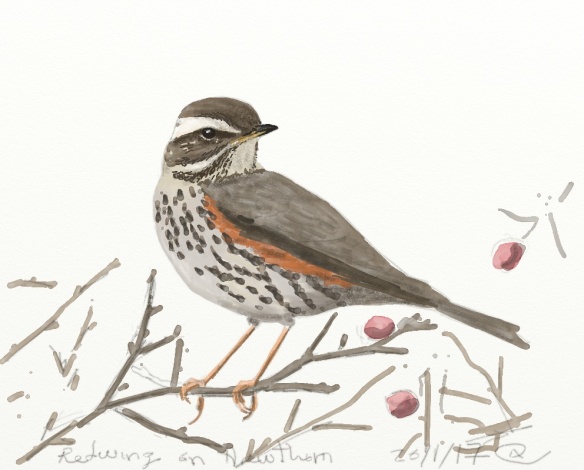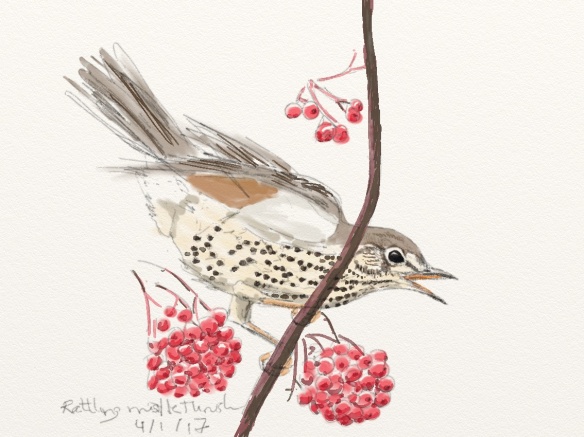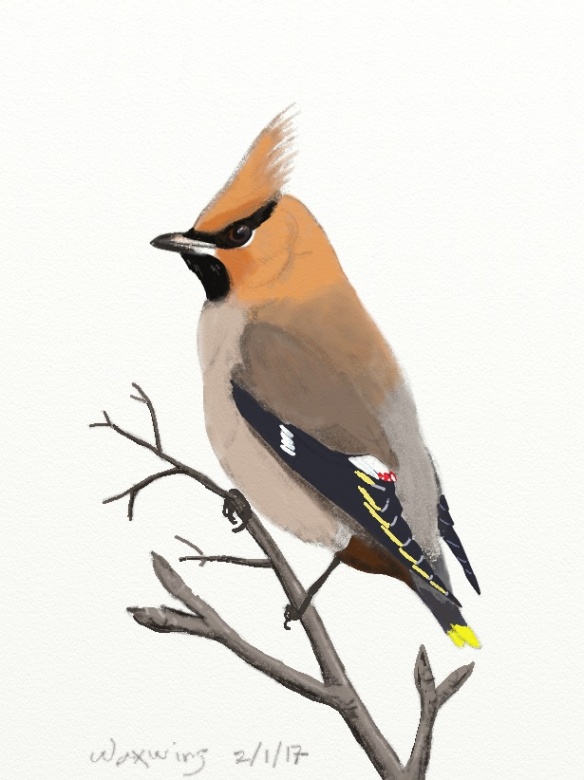 Goldfinches have an underserved reputation of gentle birds, but, if you have spent any time watching them feed, either in gardens or in fields margins of brownfield sites where teasels and burdock grow, you’ll realise are quarrelsome birds that defend their flower head aggressively. Usually a hunched posture -bill open, pointy as a dagger- towards an oncoming bird suffices to scare it away. Other times both birds fly and chase each other fiercely, hovering with their tiny claws trying to grab the enemy.
Goldfinches have an underserved reputation of gentle birds, but, if you have spent any time watching them feed, either in gardens or in fields margins of brownfield sites where teasels and burdock grow, you’ll realise are quarrelsome birds that defend their flower head aggressively. Usually a hunched posture -bill open, pointy as a dagger- towards an oncoming bird suffices to scare it away. Other times both birds fly and chase each other fiercely, hovering with their tiny claws trying to grab the enemy.
Monthly Archives: January 2017
Redwing on Hawthorn

The Redwings are in town. At the beginning of the winter they tend to keep to the countryside, when there still a plentiful supply of hawthown on hedges, but as they finish the berry crop they move inside the city in search of milder climate and more berries, often in January. They often feed in the company of blackbirds, but being warier and much more cryptic often pass unnoticed. I drew a Redwing on a hawthorn with barely any berries in it using watercolour and pencil on my wacom tablet.
The first hoot

A quick pencil sketch on my sketch book (not a digital one for a change) of a Tawny Owl. Last night at about 4:20, I heard a single lear hoot from the lime tree just outside my window, the first one of the year. In the early months of the year the owls become more noticeable by the hooting of the males and the response of females ‘kweek!’ as they establish territories and start nesting.
Shelducks

On Sunday I had the chance of watching some Shelduck displaying and chasing. Shelducks are truly spectacular ducks, large, with very striking plumage and bold behaviour. The males displayed raising their body outside the water, neck outstretched, showing a dark band down their chest, and then quickly bowing down. The females, which look similar to the males but lack the know in their bill and are noticeably smaller, bowed and moved quickly following their preferred male and enticing him to chase the other with pointing movements. All this activity was accompanied of much noise, a cackling call in between a duck and a gannet, reminiscent of a laugh. In this scene the female, in between her partner at the front, calling, and an intruder swim together before the resident male gave chase and the intruder flew away. Watercolour and pencil on Wacom tablet.
Rattling mistle thrush

In mid November in a local park, I had the chance of watching a Mistle Thrush guarding a patch of small rowans laden with berries. The thrush would rattle to fend off a couple of blackbirds that dare land on its tree. Every time it called its rattling call, it would lean forward and flash its tail and wings, displaying its white underneath. It worked! After a while, it settled amidst its bright red bounty. When set to sketch the bird, I was thinking of one of my favourite wildlife artists, the late and inimitable John Busby, who could convey behaviour with a few pencil lines and watercolour washes, and who illustrated the book Birds and Berries by Barbara and David Snow.
Waxwing

As they are unpredictable in their appearance, it is such a thrill to see Waxwings. Today I watched a small flock as they fed on the last berries of a line of rowans by a busy road in the middle of the city, and try to drink from a little puddle, the only available liquid water as it was a frosty morning. They seem to always be in a rush, and at some point the flock became agitated, flew to the top of a tree and off they went in search of more berries. The whole experience was just about ten minutes, and my photos weren’t that good so I was encouraged to draw one in the same posture of the first one we spotted. Watercolour, ink and pencil on Wacom tablet.
